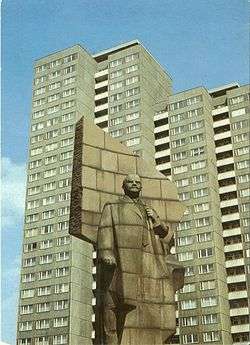Values (heritage)
The values embodied in cultural heritage are identified in order to assess significance, prioritize resources, and inform conservation decision-making. It is recognised that values may compete and change over time, and that heritage may have different meanings for different stakeholders.
Origins
Alois Riegl is credited with developing Ruskin's concept of 'voicefulness' into a systematic categorization of the different values of a monument. In his 1908 essay Der moderne Denkmalkultus (The modern cult of monuments) he describes historical value, artistic value, age value, commemorative value, use value, and newness value. Riegl demonstrates that some of these values conflict and argues that they may be culturally contingent.[2]
Charters and Conventions
The UNESCO World Heritage Convention addresses cultural sites of outstanding universal value, from an historical, aesthetic, scientific, ethnological or anthropological perspective, and highlights the need for authenticity.[3] Discussed in the 1964 Venice Charter, values and the question 'why conserve?' are the focus of the 1979 Burra Charter (last revised 1999). Cultural significance is said to be 'embodied' in the fabric, setting, use, associations, and meanings of a place, and includes aesthetic, historic, scientific, social and spiritual values for past, present and future generations. In order to preserve such values a 'cautious approach' of minimum intervention is advocated.[4][5][6]
Practice
Significance assessment typically includes consideration of the rarity, representativeness, and communicative power of assets and their values. These are then managed in order to sustain and valorize that significance.[7][8] Engagement with the economic value of heritage may help promote its preservation.[9]
See also
- World Heritage Site
- Cultural heritage management
- Conservation-restoration
- Value pluralism
- Intrinsic value (ethics)
- Collective memory
References
- ↑ Crossland, David (26 January 2010). "'Hello Lenin': Berlin to Resurrect its Disgraced Monuments". Der Spiegel. Retrieved 29 March 2011.
- ↑ Stanley Price, Nicholas et al. (edd.). Historical and Philosophical Issues in the Conservation of Cultural Heritage. Getty Conservation Institute. pp. 18–21, 69–83. ISBN 0-89236-398-3.
- ↑ "Operational Guidelines for the Implementation of the World Heritage Convention" (PDF). UNESCO. pp. 13, 94). Retrieved 29 March 2011.
- ↑ "Burra Charter (vid. Preamble, Articles 1, 3, Guidelines)" (PDF). Australia ICOMOS. Retrieved 29 March 2011.
- ↑ "Principles for the Conservation of Heritage Sites in China" (PDF). China ICOMOS/Getty Conservation Institute. p. 55). Retrieved 29 March 2011.
- ↑ Worthing, Derek; Bond, Stephen (2008). Managing Built Heritage: The Role of Cultural Significance. Blackwell Publishing. pp. 94ff. ISBN 978-1-4051-1978-8.
- ↑ Deacon, Harriet (et al.) (2004). The Subtle Power of Intangible Heritage: Legal and Financial Instruments for Safeguarding Intangible Heritage (PDF). HSRC Press. pp. 36f. ISBN 978-0-7969-2074-4.
- ↑ "Conservation Principles, Policies and Guidance for the Sustainable Management of the Historic Environment" (PDF). English Heritage. pp. 21ff. Retrieved 29 March 2011.
- ↑ "Economics and Heritage Conservation" (PDF). Getty Conservation Institute. p. 54. Retrieved 29 March 2011.
External links
- Assessing the Values of Cultural Heritage (GCI research report)
- Values and Heritage Conservation (GCI research report; annotated bibliography at pages 73-96)
